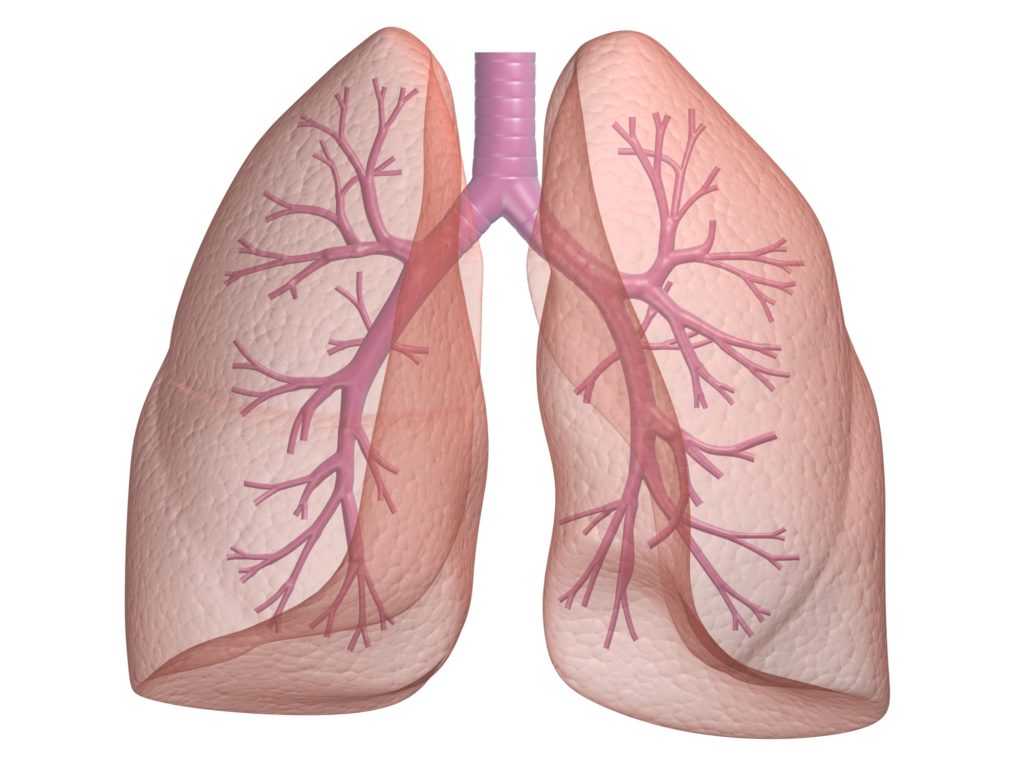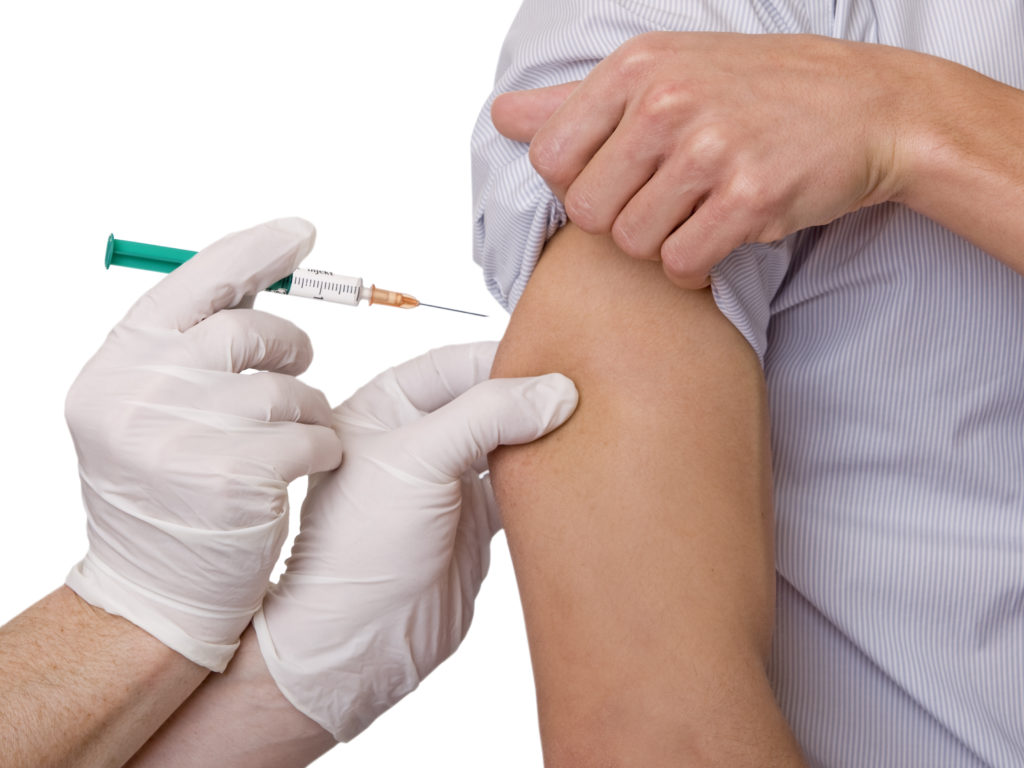Pneumonia Viral Infection is an infection of the lungs most often caused by a virus or bacterium. The infection affects more precisely the pulmonary alveoli, these tiny balloon-shaped sacs at the tip of the bronchioles. It usually affects only one of the 5 lobes of the lung (3 lobes in the right lung and 2 in the left), hence the term lobar pneumonia is used. When pneumonia also reaches the bronchi, it is called bronchopneumonia.
Pneumonia, in fact, means very different infections that are life-threatening. Thus, if pneumonia appears as a complication of a serious illness or in an elderly person, it is fatal. In very rare cases, pneumonia can also be fatal in a healthy person. The disease usually manifests itself in a cough often accompanied by sputum, shortness of breath, fever, and chills. Pneumonia usually catches itself as flu or a cold, by inhaling contaminated particles. In some cases, it occurs after another respiratory infection, such as flu or bronchitis, which “degenerates” and settles in the alveoli of the lungs. Some of the symptoms may last several weeks. It is usually not contagious.
Pneumonia Viral Infection Causes
Almost all pneumonia, is caused by a virus or bacterium. When the microbe attacks the lungs, the body reacts by triggering an inflammatory reaction. The alveoli, filled with pus and inflammatory fluid, which causes difficulty breathing. The physician must distinguish between two modes of contraction of pneumonia: contraction in the hospital (nosocomial pneumonia) and contraction outside the hospital (community-acquired pneumonia).
Nosocomial pneumonia is generally more dangerous because it occurs in people impaired by another disease. At the hospital, pneumonia is often transmitted by mechanical ventilation devices (intubation) to intensive care units. The exact type of bacteria or virus responsible for pneumonia in a given patient is only known in half of the cases, partly because laboratory techniques are not performing well. For information, here are the ones that are most frequently found in people with pneumonia.
Bacterial infections usually cause typical pneumonia (see Symptoms section). Most of the time, Haemophilus influenza, Staphylococcus aureus, or Streptococcus pneumonia (causing pneumococcal pneumonia) bacteria are responsible.
Pneumonia: More info
Atypical pneumonia manifests itself in symptoms that are less pronounced than typical pneumonia. For example, some people with pneumonia have no fever or chest pain. Pneumonia resembles a respiratory infection, such as bronchitis, sinusitis, or influenza (influenza). Among the bacteria that cause atypical pneumonia are Mycoplasma pneumonia (causing mycoplasma pneumonia), Chlamydia pneumonia, and Legionella pneumophila (responsible for Legionnaires’ disease).
The most frequent are influenza and parainfluenza viruses, respiratory syncytial virus, cold viruses (rhinoviruses), herpes-like viruses, or even SARS. The influenza virus, that is to say, the influenza virus sometimes reaches the pulmonary alveoli and thus causes viral pneumonia. Subsequently, the respiratory system is weakened by the viral infection that can open the door to a potentially more serious bacterial superinfection.
Early in 2003, a severe acute respiratory syndrome (SARS) epidemic resulted in deaths in several countries. China, Singapore, and Canada (especially the City of Toronto) were the most affected. In total, more than 8,000 people were infected with SARS. Of these, 800 died, including 43 in Canada. The epidemic, controlled within 4 months through measures to prevent its transmission (wearing masks, quarantine, etc.). SARS caused by a highly contagious coronavirus.

Pneumonia Diagnosis
The doctor evaluates the symptoms, asks about family history, and auscultate the lungs. He may administer a radiological examination of the lungs and ask for an analysis of the pulmonary secretions (expelled by coughing). If necessary, it will use other tests, such as the search for bacteria in the blood.
Pneumonia Complications
Pneumonia is cured most of the time in 2 weeks or a little more. However, more time is often needed before recovering completely.
Although they are rare, some serious complications are possible:
- Pleural effusion: It is the accumulation of inflammatory fluid between the two layers of the pleura, which causes a compression of the lung. If there is a lot of liquid, removed by suction. Exceptionally, this fluid may persist and become purulent. Surgery is often necessary.
- An abscess in the lung
- Respiratory distress: When pneumonia affects both lungs, breathing becomes extremely difficult. Assisted ventilation is often necessary.
- A septic shock, that is to say, a generalized infection of the body due to the passage of the bacteria from the lungs to the blood. This occurs mainly with pneumococcal pneumonia.
- With antibiotics, pneumonia causes fewer deaths than before. All the same, both pneumonia and influenza (influenza) are the leading cause of death from an infectious disease in Canada.
- Very old people with a lower immune system and people with other serious illnesses are more likely to succumb to it.
Pneumonia Symptoms
Typical symptoms include:
- A sudden rise in a fever of up to 41 ºC (106 ºF) and severe chills
- Short breath, rapid breathing, and pulse
- A cough: At first, the cough is dry. After a few days, it becomes greasy and accompanied by yellowish or greenish secretions, sometimes streaked with blood.
- Thoracic pain that intensifies during coughing and deep breathing
- Degradation of the general state (fatigue, loss of appetite)
- Muscular pains
- Headaches
- Wheezing
- Altered consciousness
- Pulse too fast (greater than 120 beats per minute) or the respiratory rate greater than 30 breaths per minute
- Temperature above 40 ° C (104 ° F) or below 35 ° C (95 ° F)
Some signs of severity must lead to immediate hospitalization.
Atypical pneumonia
Atypical pneumonia is more misleading because its symptoms are less specific. They can be manifested by headaches, digestive disorders, or joint pain. Coughing is present in 80% of cases, but in only 60% of cases in the elderly.

Pneumonia Prevention
Basic Preventive Measures
- Have a healthy lifestyle (sleep, eating, physical exercise, etc.), especially during the winter. See our Strengthening our immune system for more information.
- No smoking helps prevent pneumonia. Smoke makes the airways more vulnerable to infections. Children are particularly sensitive to it.
- Wash hands regularly with soap and water or an alcohol-based solution.
- The hands are constantly in contact with microbes that can cause all kinds of infections, including pneumonia. These come into the body when you rub your eyes or nose and when you put your hands to your mouth.
- When taking antibiotics to treat an infection, it is important to follow the treatment from the beginning to the end.
- Observe the hygiene measures displayed in clinics and hospitals such as washing hands or wearing a mask if necessary.
Other measures to prevent the onset of the disease:
- The vaccine against influenza: The influenza virus can cause pneumonia directly or indirectly. Thus, the influenza vaccine reduces the risk of pneumonia. renewed every year.
- Specific vaccines: Pneumococcal vaccine protects against pneumonia with Streptococcus pneumonia, the most common in adults (it combats 23 serotypes of pneumococci). These vaccines (Pneumovax®, Pneumo®, and Pnu-Immune®) are most suitable for adults with diabetes or COPD, people with weakened immune systems, and those aged 65 years and older. Its effectiveness convincingly demonstrated in seniors residing in long-term care facilities. Prevenar® vaccine offers good protection against meningitis in young children, and slight protection against ear infections and pneumococcal pneumonia. The Canadian National Advisory Committee on Immunization advocates its systematic administration for all children 23 months of age or younger to prevent meningitis.
- Older children (24 months to 59 months) are also vaccinated if they are at high risk of infection. The American Academy of Pediatrics also recommends this vaccination. In Canada, systematic vaccination against Haemophilus influenza type B (Hib) is recommended for all infants at the age of 2 months. Three conjugate vaccines registered in Canada: HbOC, PRP-T, and PRP-OMP. The number of doses varies according to the age at the first dose.
Measures to Promote Healing and Prevent Aggravation
- First of all, it is important to respect a period of rest.
- Throughout the course of the illness, avoid exposure to smoke, cold air, and air pollutants as much as possible.
Measures to prevent complications
If the symptoms of pneumonia persist with the same intensity 3 days after the start of antibiotic treatment, you should see your doctor as soon as possible.



